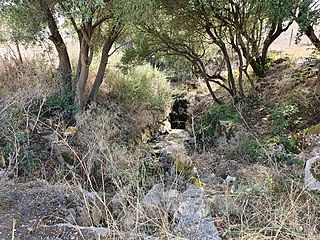 W
WThe archaeological site of Colaride, is a Roman necropolis in a natural cave, located in the Portuguese civil parish of Agualva e Mira-Sintra, municipality of Sintra.
 W
WBarragem Romana da Fonte Coberta, the Roman Dam of the Covered Fountain is situated in the parish of São Sebastião in the municipality of Lagos, in Portugal. The dam was constructed during the Romanization of Hispania.
 W
WCentum Cellas, also referred to as Centum Cellæ, Centum Celli, or Centum Cœli, is a Roman villa rustica that dates back to the 1st Century AD, located in the Mount of Santo Antão in Belmonte, Castelo Branco district, Portugal.
 W
WConímbriga is one of the largest Roman settlements excavated in Portugal, and was classified as a National Monument in 1910. Located in the civil parish of Condeixa-a-Velha e Condeixa-a-Nova, in the municipality of Condeixa-a-Nova, it is situated 2 kilometres (1.2 mi) from the municipal seat and 16 kilometres (9.9 mi) from Coimbra.
 W
WLacobriga was an ancient town of Celtic origin, usually identified as the predecessor of the current city of Lagos in Portugal. The nearby Archaeological Site of Monte Molião is also known as Lacobriga.
 W
WMonte Molião is an archaeological site located in the Municipality of Lagos, in Portugal . The site is located on Monte Molião, an elevation north-west of Lagos city center, on the east bank of the Ribeira de Bensafrim, in the parish of São Sebastião. It is the vestiges of an old fortified settlement, also identified as Lacóbriga, occupied since the Second Iron Age, between the end of the 4th century BC and the end of the 3rd century BC. This location is of Celtic origin and was progressively abandoned during the Carthaginian and Roman, the Republican Roman, and the Imperial Roman ages due to the growth of another population center, with the same name.
 W
WThe Roman Temple of Évora, also referred to as the Templo de Diana is an ancient temple in the Portuguese city of Évora. The temple is part of the historical centre of the city, which was included in the classification by UNESCO as a World Heritage Site. It represents one of the most significant landmarks relating to the Roman and Lusitanian civilizations of Évora and in Portuguese territory.
 W
WScallabis was the Roman name of Santarém, Portugal.